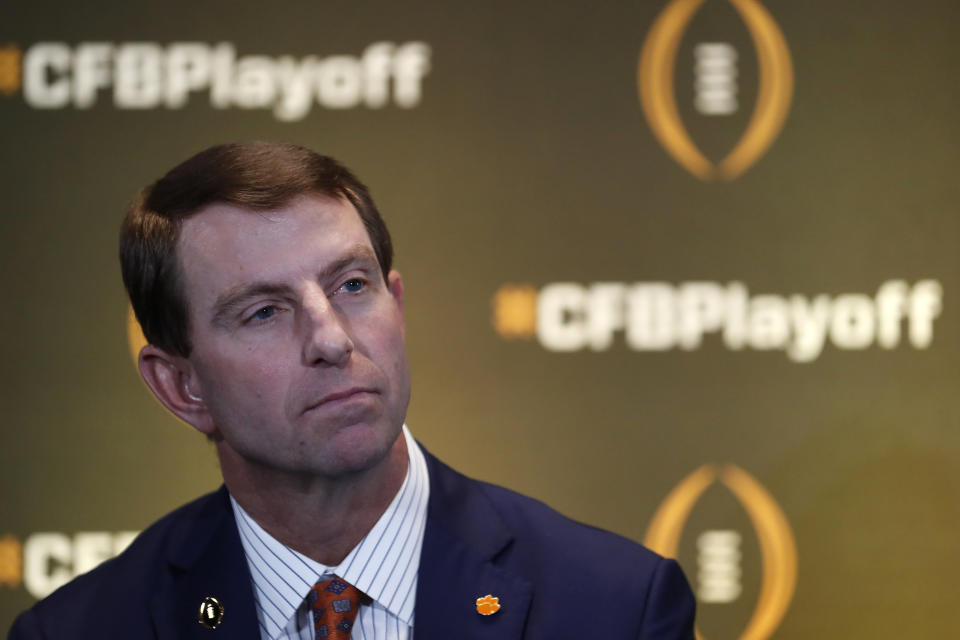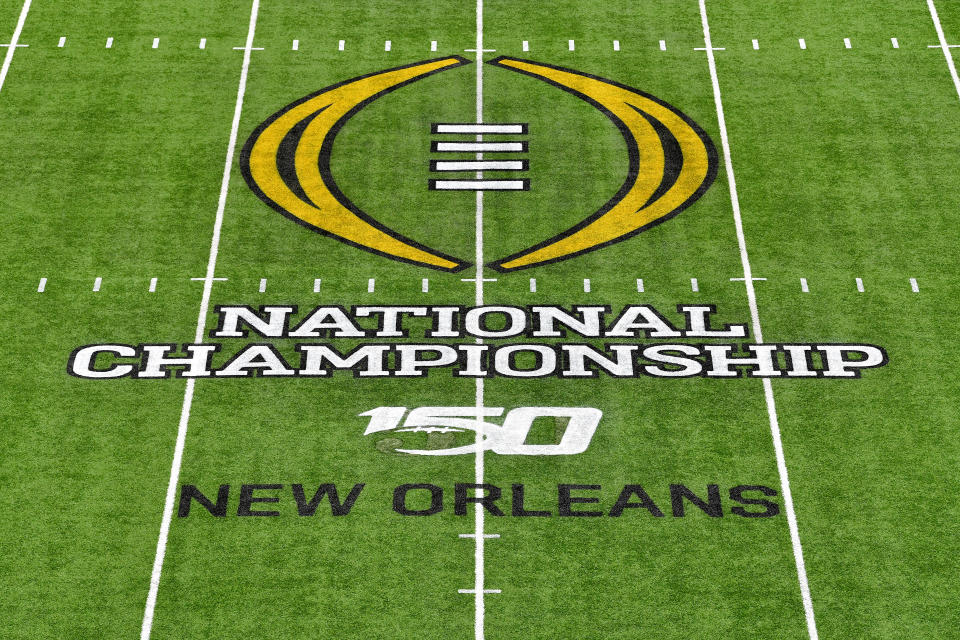Will there be college football? A new flurry of pessimism has arrived
In the wake of the Clemson’s football team’s 23 positive COVID-19 cases becoming public on Friday, a rip current of uncertainty is rippling through college athletics.
Around the country, the fear among administrators of not playing football in the fall – or having a season rife with interruptions and canceled games – has emerged stronger than at any point in the last month.
One industry source summed up the tenor as one of “overall discouragement.” Another college athletics industry source told Yahoo Sports there’s been “more pessimism the last few days than in weeks.” The source added that the negative feelings have transcended athletics, as college presidents are again concerned about the prospect of in-person classes being held.
With college athletes having been allowed to return to campus for voluntary workouts for nearly three weeks, the real-time complications of testing, tracing and quarantining athletes have been exponentially more complex than many expected. The chain reaction of positive tests and quarantining those they’ve been in contact with for 14 days has put in context how daunting it will be to eventually workout, practice and play games.
The past few weeks have reaffirmed the lack of a consistent national plan, the economic disparities for medical equipment among the FBS schools and the amount of overall difficulties in executing a season.
“I’m way less convinced we will play [football] than I was a few weeks ago,” one athletic director told Yahoo Sports.
One FBS coach summed up his uneasiness with the risks and complications this way: “I think there will be people who’ll be playing football. I just don’t know for how long or how much.”
The last 72 hours has seen the 23 positive tests at Clemson, 13 positive tests at Texas and Kansas State pausing voluntary workouts for 14 days after 14 positive tests. The University of Houston also paused voluntary training last week after six positive tests when the school didn’t test athletes upon return.

Multiple sources stressed to Yahoo Sports that while Clemson’s numbers are an anomaly in what has been reported, it isn’t the only school with both large outbreaks of positive tests and even bigger numbers in quarantine. Sports Illustrated reported on Saturday afternoon that at least 30 LSU players have been in quarantine. Many others appear to be in similar situations.
Yahoo Sports reached out to more than 20 athletic directors, coaches and administrators in the aftermath of the Clemson news to gauge what the flurry of positive test numbers mean for the sport’s future.
The responses showed a pall of pessimism cast over the sport and underscored the difficult balance of health concerns, the financial pressures on football being played and the awkward optics of amateurism.
“It’s a Rubik’s Cube of how you’re moving through all this,” Clemson athletic director Dan Radakovich said in a phone interview. “It’s very difficult right now. I almost think it’s part of the process to get us where we need to be.”
College football was always going to be the hardest sport to figure out a way to return. The amateur and academics elements tied to the sport – no matter how much eyes may roll at those notions – meant that a bubble scenario like in pro sports simply couldn’t exist. The locker room and contact elements also mean daily challenges.
Those coaches and administrators that flashed optimism about the season mentioned the inevitability of players catching the virus and schools figuring out ways to work through it. Statistically, there have been few deaths in the 15-24 age bracket from COVID-19. But that doesn’t necessarily limit the risks.
“If we’re going to have this season, we need to get comfortable being uncomfortable,” said another FCS coach. “I think most people in college football came into this eyes wide open, not assuming we’d ever hold the number of positives to zero but do our best to mitigate the spread.”
While there’s risk a player could have an undiagnosed medical condition that’s exacerbated by the virus, there’s still significant risk of exposing the virus to older staff members.
“Until we have medicine that gives people confidence about resuming activities or we get comfortable enough where we don’t flinch every time we see a new case count, it’s going to be hard to play,” said Florida athletic director Scott Stricklin. “It’s like every nerve is exposed on this topic.”
It’s worth noting that some of the factors scaring coaches and administrators when they peek ahead to the season may change and evolve. The quarantine period may shrink from 14 days. The intensity of contact tracing may lessen as knowledge increases. There’s still much to learn about the virus, and in many ways schools are working with a set of evolving facts and rules.
Can things change before teams begin to formally gather in July? Eight hours of conditioning, weight training and film review begin for most schools on July 13. (For those handful of schools playing in Week 0, that date is July 6.) There’s a gradual ramp-up from there, which will morph to more formal practices. As players gather for practice, the risk of spreading the virus among teammates only increases.
Multiple coaches stressed one of the keys to winning this season will be avoiding outbreaks and not having to forfeit games because of an in-season outbreak. Coaches are realizing the risk of large swaths of the roster missing two-week chunks of the season.
“None of us are even practicing right now, and we’re still having to quarantine dudes,” said a third FBS coach. “It’s only the middle of June. Maybe in July we’ll have an answer of what happens during practice. Right now, we don’t have an answer what to do if this happens in fall camp.”
The athletic directors that appear at the biggest disadvantage managing the virus are those at schools that cannot afford consistent and widespread testing.

One Group of Five athletic director said he’s budgeted a half-million dollars for testing. Athletic directors at wealthier schools have committed up to $2 million.
That athletic director said that as of now it’s taking five days for that school’s tests to return. “The whole key for us to have a football season is rapid testing,” he said.
He explained that the ability to test and find the results quickly would help limit quarantine time after contact tracing because they’d have answers more readily available whether players have tested positive or not.
A coach at the Group of Five level said he felt uncomfortable about the optics of amateur players being subjected to the bubble-like conditions that may be needed to have a successful season.
“There are only 10 to 12 programs that can really afford all the testing and medical attention the NFL is giving guys,” the coach said. “These players aren’t independent contractors. They are 17-to 21-year olds with no union representation. No one is fighting for them.”
The most uncomfortable subject for administrators and coaches is the potential death of a player. There are concerns about pre-existing conditions that the virus can exploit and exacerbate. So far around college football, there’s been no positive case that’s publicly known that’s led to a player on a ventilator or gotten seriously ill. But what do administrators do when that image emerges?
With a dizzying flurry of cases the past few days, there’s no reason to think that the numbers will stop or slow. And for those in college athletics, it’s a reminder that they’ll be walking on a high wire in their attempt to execute a season the next six months.
“This is going to be a very bumpy landing,” said a Power Five athletic director. “We haven’t even brought back all our teams. And this is the most controlled setting. There’s no one else on campus.”
More from Yahoo Sports:

 Yahoo Sports
Yahoo Sports 